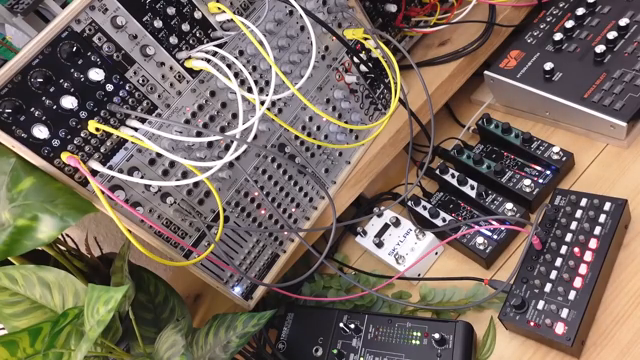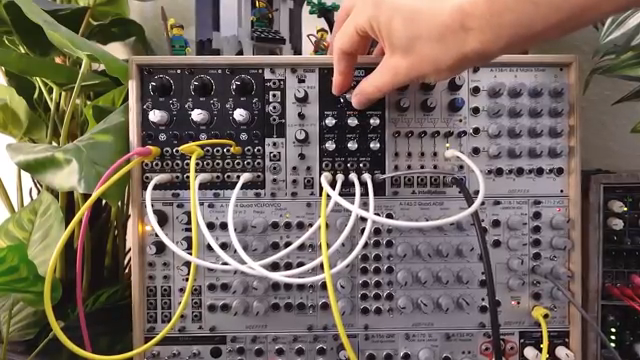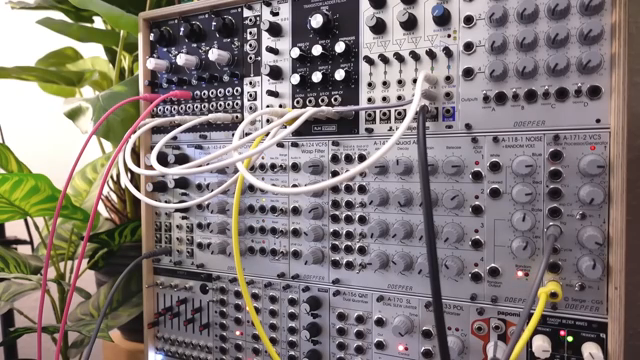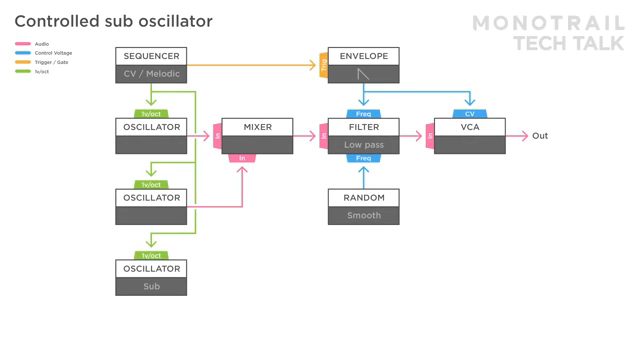MonotrailTechTalk dives into the infamous three-oscillator setup in synths, tackling whether it’s truly necessary or just a vintage myth. With a unique blend of wit and expertise, discover if you need all those oscillators or if you’re better off pushing two like a master chef with limited ingredients.

27. August 2025
RILEY
MonotrailTechTalk Delivers the Synth Gospel: Do You Really Need 3 Oscillators?
ARP 2600, EMS VCS 3, HydraSynth, Minimoog Model D, Nano Modules Ona, Peak, Pro 3
A Triad of Oscillators – Vintage Standard or Just a Myth?
In the world of synths, a three-oscillator setup is often seen as the gold standard, reminiscent of the early days of iconic synths like the Minimoog Model D and ARP 2600. However, MonotrailTechTalk is here to question whether this setup is really as essential as it’s cracked up to be. In the context of modern synths, with multi-functional modules like the Pro 3 or the poly capabilities of the Hydrasynth, is there still a demand for the classic trio? The short answer: not really. While there are certainly glorious patches out there made with three oscillators, the world of modular synths has evolved, and there’s plenty to explore beyond the triple. Just like a street taco does the job with fewer ingredients, you might find two oscillators can serve your musical palette just fine.

"Obviously the answer is no. There are tons of fantastic single and dual oscillator sounds."
The Cheap Trick: Why Triple Oscillators Might Be Misleading

"...you don't need that third oscillator if you have a sub output."
Old school synths convinced us that more oscillators equaled more power, but MonotrailTechTalk lets us in on a little secret – it’s not always about quantity. One big reason the three-oscillator standard confuses today’s modular maestros is because old synths, despite their multiple oscillators, often dedicated one as an LFO. That’s right, they subbed it out: one was always playing backup, keeping things smooth with a low-frequency duty. This means most classic synth patches didn’t even need all three in active sound production, they were backed by silent rhythm, like a good drummer letting the bassist shine. Furthermore, the lack of sub oscillators in these retro devices meant engineers often tuned one entire oscillator down to add some bass depth. But modern gear, including the wares from Nano Modules like the Ona, allows for sub octaves from a single unit, meaning you can create those fat, low-end sounds without a third wheel. It’s like realizing you only need one napkin at a BBQ when you’d been grabbing three.
Tune It or Lose It: Making the Most of Three Oscillators
MonotrailTechTalk doesn’t shy away from the fun part of having three oscillators, especially when it comes to tuning those bad boys. When you’re holding the keys to three independent oscillators, each can be a unique beast in your sonic zoo. You can experiment by tuning each one to a different note within a chord, layering them like a chef building a fine sandwich. Stack a C, E, and G together, and you end up with a symphony of vibrations that tickle the ear in surprising ways. But it’s not just about what notes you can create. It’s how those notes interact and challenge each other, playing off micro-tuning and tonal texture shifts. Like jazz players sliding into a riff, three oscillators can improvise with unexpected harmonics even when fed the same scale. There’s a beauty in the chaos, and MonotrailTechTalk walks us through like a tour guide in an art gallery, making you see things you never considered before. Whether you’re detuning or adding slightly offset layers, dragging a third oscillator into your setup turns your synth into a painting with a new color palette.
Unlocking Modulation Madness with a Third Oscillator
In a world where a single oscillator can often do the job, adding a third isn’t just about extra sound – it’s about opening doors to modulation madness. MonotrailTechTalk shows us how a third oscillator becomes the artist’s brush, painting vibrant modulation landscapes. By tuning that third oscillator to sine wave status and letting it dance through VCAs monitored by LFOs, you can inject life into tame sequences with FM modulation that spirals in and out. It’s like sending your tracks on vacation, every frequency modulation a postcard reminding you of the wild rides. What’s more, when you start using the third oscillator as a modulator for wave folders or filter frequencies, you’re looking at a sonic kaleidoscope, and suddenly your sounds are as textured as ever. Modulating inside the matrix mixers, like highlighting notes with neon, lets each sound ripple with mood swings and attitude adjustments. Just seeing what two well-placed VCOs and their unpredictable companion can do makes you forget all the rules you thought you knew. If nothing else, a third oscillator is a license to thrill, with MonotrailTechTalk guiding you as your synthesizer Sherpa.

"A third oscillator also has a lot of value as a tuned audio rate modulator."
The Sub-oscillator: Low-end Love Affair

"A single oscillator with sub output feels very tight."
Diving below the frequency floor, MonotrailTechTalk reminds us how sub oscillators can romance your track’s low-end without needing a third oscillator for every little tweak. With a decent sub-oscillator output, you pull out tones like a magician yanking rabbits from hats. Choose between squares for that prominent bass punch or sine waves for smoother sub-bass and twist the vibe without needing the full triplet roster. Modern gear makes this easier than ever, twisting sub-outputs to bring depth and warmth with fewer soldered connections. Omni-tuning can lead the faithful onward, avoiding the trap of clutter with control and clarity. You can easily play with crossfades, creating a mix balance that sways like a good jazz number on vinyl. It’s all about maintaining presence and power without losing sight of the noises you fell in love with in the first place.
Repurpose and Recycle: A VCO as Your New LFO
MonotrailTechTalk ends the session with a killer hack: using a VCO as a low-frequency oscillator. This trick puts you in the driver’s seat with full voltage control, ideal for when you want to swing the LFO from crawling rhythms to frenetic audio rates. It’s like using a full band when all you need is a simple tap dance shuffle. While the original oscillator was never intended as a humble LFO, Monotrail shows how seamlessly it can shift between LFO and audio rates to give a track dynamic range and novel characteristic. Syncs to master clocks create the tempo-hugging pulses every beat-maker dreams about, and with every modulation tweak, you’re shaving off unnecessary complexity like trimming steak to its delicious core. Here’s to rhythmic innovation and pulling more power out of the same old unit, with MonotrailTechTalk proving that the streets always have new beats to drop.
Latest articles
Watch on YouTube:
https://www.youtube.com/MonotrailTechTalk
Sponsored links:
If you purchase via these links, we may earn a small commission – at no extra cost to you.
🔗 Check price on Amazon
🔗 Check price on Amazon
🔗 Check price on Amazon
🔗 Check price on Amazon
🔗 Check price on Amazon